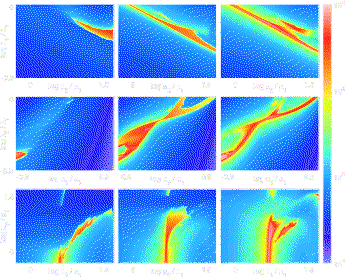Spatial mechanisms for coexistence of species sharing a common natural enemy

We examine the conditions under which spatial structure can mediate coexistence of apparent competitors. We use a spatially explicit, host-parasitoid metapopulation model incorporating local dynamics of Nicholson-Bailey type and global dispersal. Depending on the model parameters, the resulting system displays a plethora of asynchronous dynamical behaviors for which permanent or transient coexistence is observed. We identify a number of spatially-mediated tradeoffs which apparent competitors can utilize and demonstrate that the dynamics of spatial coexistence can typically be understood from consideration of two- and three-patch systems. The phase relationships of species abundances are different for our model than for some other mechanisms of spatial coexistence. We discuss the implications of our findings relative to issues of community organization and biological conservation.
